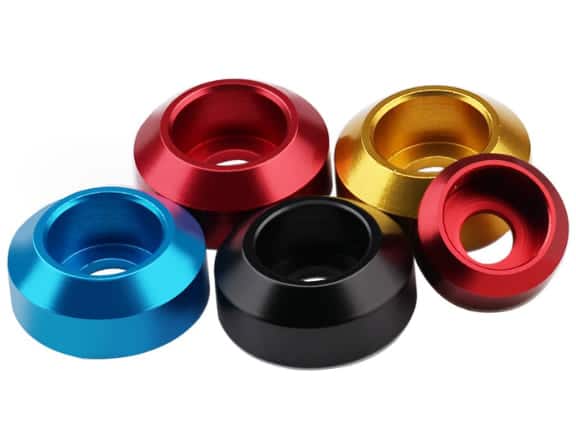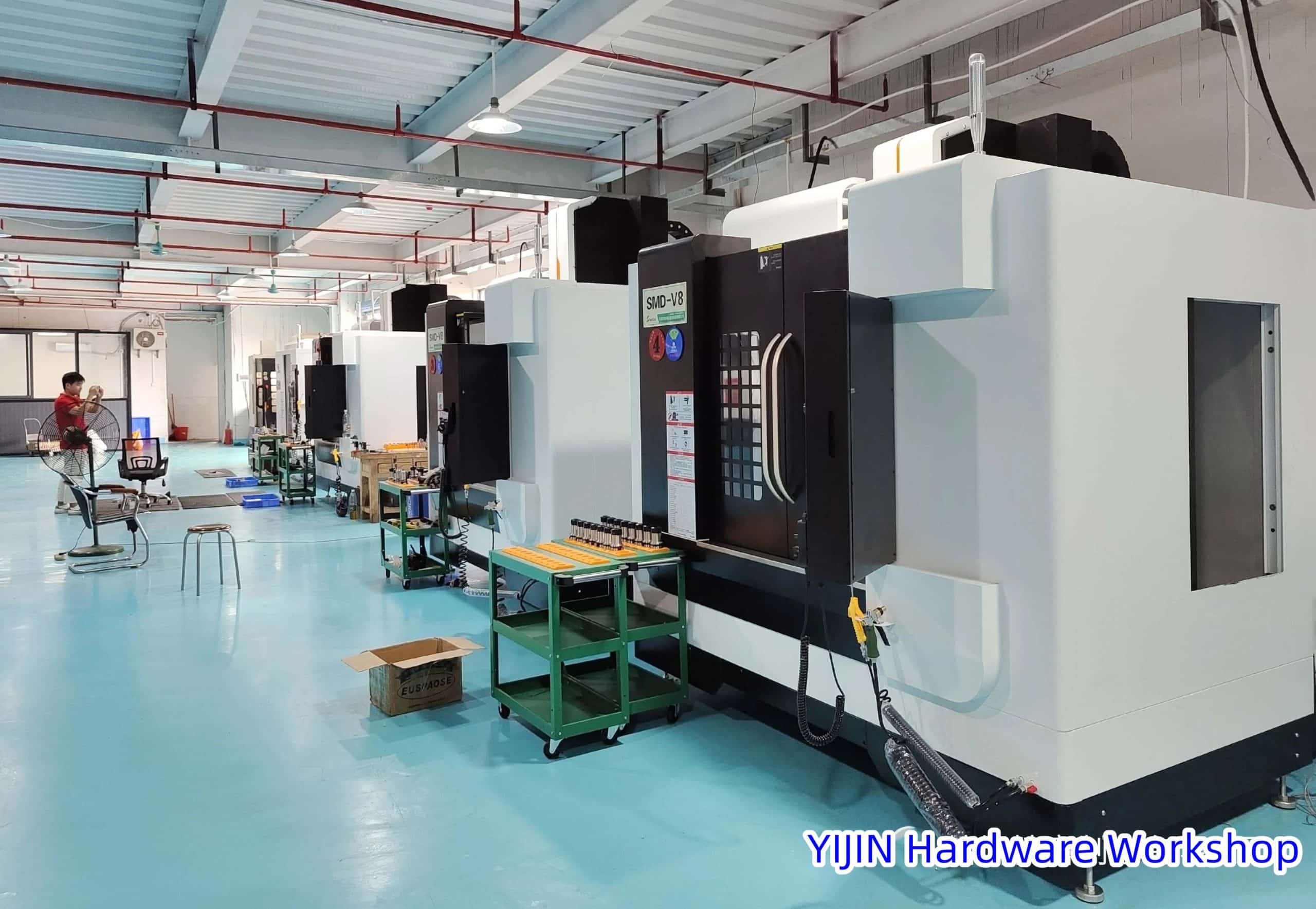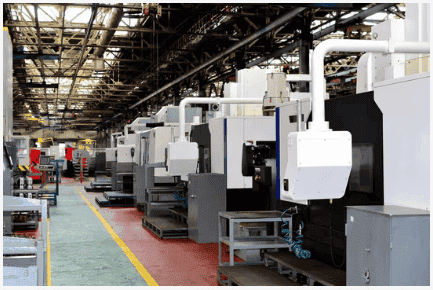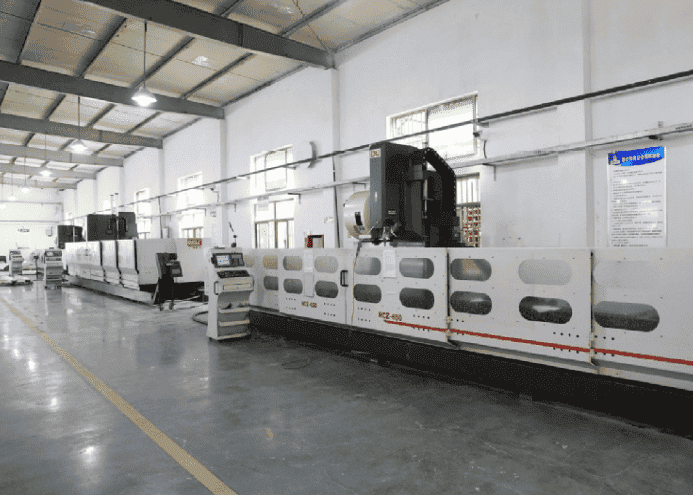I. Introduction to CNC Machining Design Guide for Aluminium CNC Parts
Welcome to the CNC Machining Design Guide specifically tailored for aluminium CNC parts. Computer Numerical Control (CNC) machining has revolutionized the manufacturing industry by enabling the precise and efficient fabrication of complex parts.
This guide aims to provide you with essential insights and practical considerations for designing aluminium components optimized for CNC machining processes.
Aluminium, known for its lightweight, corrosion-resistant, and excellent thermal conductivity properties, is a widely used material in various industries, including aerospace, automotive, electronics, and more.
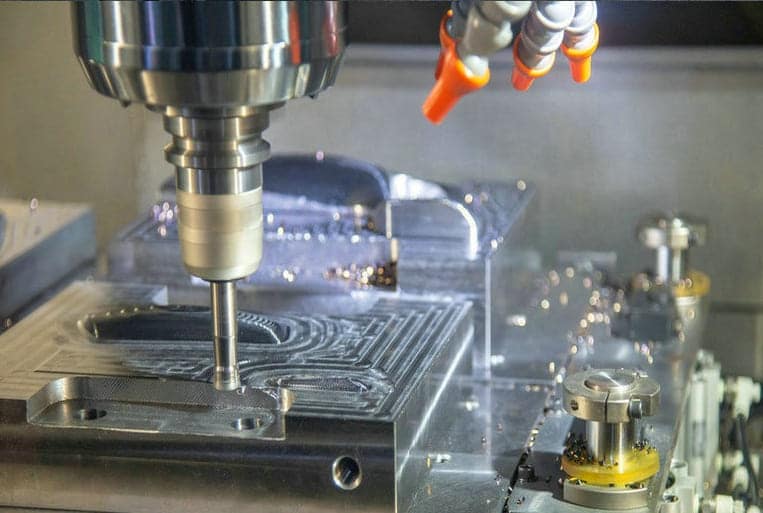
When it comes to CNC machining aluminium parts, careful attention to design details can significantly impact the quality, accuracy, and cost-effectiveness of the final product.
In this guide, we will delve into key design principles, material characteristics, machining capabilities, and best practices that will empower you to create designs that seamlessly translate into high-quality aluminium CNC parts.
Whether you’re a seasoned engineer, a designer, or someone new to the world of CNC machining, this guide will provide you with valuable knowledge to optimize your aluminium part designs for CNC fabrication.
A. Importance of Proper Design and Manufacturing Considerations:
In the realm of modern manufacturing, the synergy between design and manufacturing is paramount.
Achieving successful outcomes in terms of product functionality, quality, cost-efficiency, and time-to-market hinges on the careful integration of design and manufacturing considerations.
This synergy is particularly critical in CNC machining, where intricate designs are transformed into tangible products.
Let’s delve into why proper design and manufacturing considerations are of utmost importance:
- Optimized Functionality: Proper design and manufacturing considerations ensure that the final product not only meets its intended purpose but does so efficiently. Design decisions impact factors such as structural integrity, performance, and usability. When designs are well-thought-out with manufacturing in mind, they can be tailored to leverage the strengths of the chosen fabrication process, enhancing the overall functionality of the product.
- Manufacturability: A design that looks impressive on paper might not translate seamlessly into production. Taking manufacturability into account during the design phase prevents costly modifications down the line. By considering factors like material properties, machining processes, tool accessibility, and assembly requirements, you can create designs that can be manufactured with precision and consistency.
- Reduced Lead Times: Integrating design and manufacturing considerations early on streamlines the entire production process. A well-designed part is easier to machine, as it minimizes the need for complex setups, reduces tool changes, and optimizes tool paths. This leads to shorter lead times and quicker turnaround from design to finished product.
- Quality and Consistency: Thoughtful design aligns with the capabilities of manufacturing processes, resulting in greater consistency and quality in the final product. Proper design and machining considerations reduce the likelihood of defects, such as tool marks, burrs, and dimensional inaccuracies, which can compromise product quality.
- Cost Efficiency: Design decisions directly influence manufacturing costs. Overly complex designs can increase material wastage, machining time, and tool wear, thereby inflating production expenses. By designing for efficiency and ease of manufacturing, you can minimize costs while maintaining product integrity.
- Innovation and Creativity: Collaborating between design and manufacturing teams encourages innovation. When both sides share insights and challenges, new solutions can emerge that leverage cutting-edge techniques, materials, and processes. Creative problem-solving enhances the product’s competitive edge.
- Minimized Iterations: Addressing potential issues during the design phase reduces the need for iterative changes. This saves time as well as it avoid problem that occur while production phase. It allows for a smoother progression from design validation to manufacturing execution.
- Cross-Functional Communication: Encouraging communication and collaboration between designers and manufacturing experts fosters a holistic understanding of the entire product development process. This synergy promotes learning, knowledge sharing, and the cultivation of a well-rounded skill set among team members.
In the realm of CNC machining, where precision and complexity reign, the bridge between design and manufacturing is particularly influential.
Embracing proper design and manufacturing considerations facilitates a harmonious blend of creativity, technical feasibility, and efficient production, resulting in superior products that are cost-effective, reliable, and timely.
By emphasizing this integration, manufacturers and designers can together push the boundaries of what’s possible in the world of modern manufacturing.
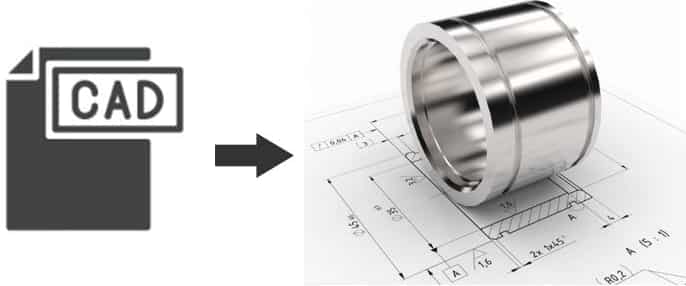
B. Benefits and Challenges in Machining Aluminium Parts:
Machining aluminium parts presents a unique set of benefits and challenges due to the material’s distinct properties and characteristics.
Understanding these aspects is crucial for achieving successful and efficient CNC machining outcomes.
Here are the advantages and disadvantages of machining aluminium parts:
Advantages:
- Lightweight: Aluminum is a popular choice for applications where weight reduction is crucial because of its low density. Machined aluminium parts contribute to overall product weight savings, particularly in industries like aerospace and automotive.
- High Thermal Conductivity: Due to its superior thermal conductivity, aluminum effectively dissipates heat. In applications where heat management is crucial, such as electronic components and heat sinks, this feature is advantageous.
- Corrosion Resistance: Aluminium naturally forms a protective oxide layer on the upper surface of metal so, it become corrosion resistance and it avoid corrosion.
- Machinability: Aluminium is generally considered to be a highly machinable material. It can be efficiently cut, drilled, milled, and shaped using various machining processes, resulting in shorter production lead times.
- Good Surface Finish: Machining aluminium can yield smooth surface finishes due to the material’s softness and ductility. This property is advantageous for parts requiring aesthetic appeal or tight tolerances.
- Electrical Conductivity: Aluminium’s electrical conductivity makes it suitable for applications involving electrical connections or grounding, such as electronic enclosures and connectors.
Disadvantages:
- Material Softness: While aluminium’s softness can aid in achieving smooth surface finishes, it can also lead to increased tool wear and risk of deformation during machining. Specialized tooling and cutting strategies are often necessary to counteract these effects.
- Gummy Chips: Aluminium can produce gummy chips that cling to cutting tools, potentially affecting machining accuracy and surface finish.
- Work hardening: Some aluminium alloys can work-harden during machining, causing increased tool wear and reduced cutting efficiency over time.
- Thermal Expansion: Aluminium has a relatively high coefficient of thermal expansion, which can lead to dimensional changes as the material heats up during machining. Compensating for thermal expansion is important to maintain accurate dimensions.
- Material Variability: Aluminium alloys come in various compositions, each with unique properties. Material variability can impact machinability, surface finish, and tool life. Material selection should consider the specific alloy’s characteristics.
- Tool Wear: Aluminium’s abrasive nature can accelerate tool wear, requiring frequent tool changes and potentially increasing production costs. Employing high-quality tool materials and coatings can extend tool life.
- Chip Control: Managing chips generated during aluminium machining is crucial to prevent chip buildup, tool damage, and surface finish issues. Proper chip evacuation systems and strategies are necessary.
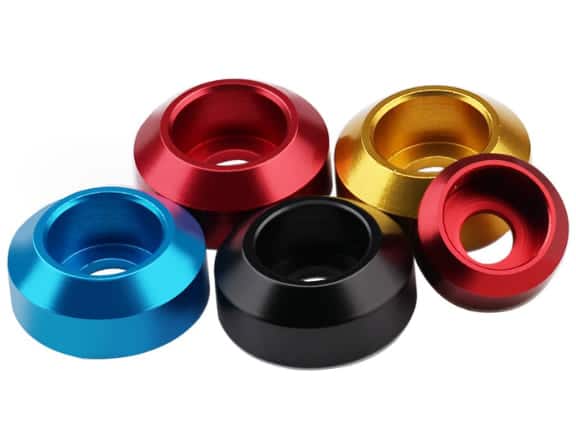
II. Key CNC Machining Design Guide Considerations:
When designing parts for CNC machining, especially for aluminium CNC parts production, several critical considerations must be taken into account to ensure successful and efficient manufacturing.
Here are key design guide considerations for optimizing the CNC machining process:
A. Manufacturing Tolerance:
Designing within appropriate manufacturing tolerances is crucial for achieving accurate and consistent results.
Tolerances define the allowable variation from the specified dimensions and ensure that parts are functional and fit together properly.
It’s important to work closely with your CNC machining provider to understand their capabilities and recommended tolerances for different features.
B. Cavities and Pockets:
Designing cavities and pockets in CNC machined parts involves considerations such as tool access, tool diameter, and material removal.
Avoid tight corners, as they may be hard to machine accurately. Provide sufficient tool clearance, and consider adding draft angles to aid in part removal from molds or dies.
C. Internal Edges and Radii:
Internal edges and radii play a role in part strength, aesthetics, and ease of manufacturing.
Sharp internal corners can result in stress concentrations and difficulties during machining.
Adding fillets or radii to internal edges improves part durability and enhances machining efficiency.
D. Thin Walls and Structures:
Thin walls and structures can be challenging to machine accurately, as they are susceptible to vibrations and deflection during machining.
Consider the material’s rigidity and machining forces when designing thin walls.
Reinforce them with ribs or supports to improve stability and prevent distortion.
E. Holes, Threads, and Undercuts:
Holes and threads require careful consideration for proper alignment, size, and depth.
For internal threads, consider using standard thread sizes to facilitate tooling and reduce complexity.
Undercuts, which involve features that prevent direct access by cutting tools, should be minimized or avoided, as they can complicate machining.
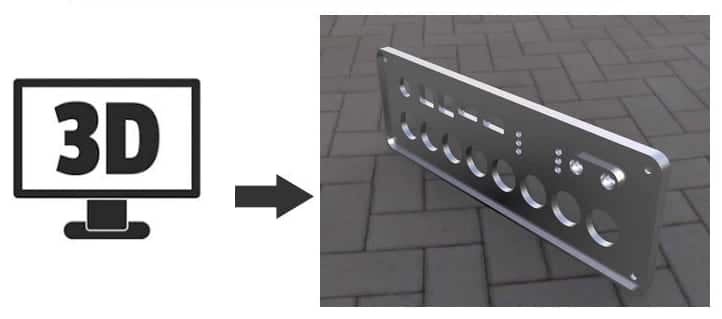
III. Material Selection for Aluminium CNC Parts
A. Factors Influencing Material Choice:
Selecting the right material for aluminium CNC parts is a crucial decision that impacts the part’s performance, manufacturability, and overall cost.
Several factors influence material choice, ensuring that the selected material meets the specific requirements of the application. These factors include:
- Mechanical Properties: Consider the required strength, hardness, toughness, and other mechanical properties of the part. Different aluminium alloys offer varying levels of these properties.
- Corrosion Resistance: Evaluate the environment the part will be exposed to. Aluminium’s natural oxide layer provides some corrosion resistance, but certain alloys offer enhanced protection against corrosive elements.
- Thermal Conductivity: If the part will be exposed to heat or needs to dissipate heat, consider the aluminium alloy’s thermal conductivity. High thermal conductivity is beneficial for heat sinks and components with thermal management needs.
- Electrical Conductivity: Some applications require electrical conductivity. Different aluminium alloys offer varying levels of electrical conductivity, so choose accordingly.
- Machinability: Consider how easily the chosen aluminium alloy can be machined. Alloys with good machinability reduce tool wear and machining time, leading to cost savings.
- Aesthetic and Surface Finish: If the part’s appearance is important, consider how well the material can be finished, anodized, or coated to achieve the desired aesthetics.
- Cost: The cost of raw materials can impact the overall project budget. Balancing material quality and cost-effectiveness is crucial.
- Availability: Ensure that the selected aluminium alloy is readily available from suppliers to prevent delays in production.
- Regulatory Compliance: Certain industries have specific regulations or standards for material selection
B. Common Aluminium Alloys Used in CNC Machining:
Several aluminium alloys are commonly used in CNC machining due to their favourable properties. Below are the list of the most common alloys:
- 6061-T6: This versatile alloy has good strength, resistance to corrosion, and machinability. It’s often used for a wide range of CNC machined parts, including structural components and fittings.
- 7075-T6: Known for its high strength and excellent fatigue resistance, 7075-T6 is used in applications requiring exceptional structural integrity, such as aerospace components and high-performance equipment.
- 2024-T3: With good machinability and high strength-to-weight ratio, 2024-T3 is suitable for applications where weight savings and durability are important, such as aircraft structures.
- 5052-H32: This alloy offers good corrosion resistance and formability. It’s commonly used for parts requiring intricate shapes and moderate strength, such as sheet metal components.
- 6063-T5: Often used for extruded shapes, 6063-T5 has good surface finish and is suitable for applications like architectural profiles and frames.
- 6082-T6: Similar to 6061-T6, this alloy has excellent machinability and is used in a wide range of CNC machining applications, including structural parts and fittings.
Learn More: 6061 Vs. 7075 Aluminum, Which One Is Better?
Remember that the specific requirements of your project will determine the most suitable aluminium alloy.
Considerations such as mechanical properties, corrosion resistance, and thermal characteristics should guide your material selection process to ensure optimal performance and cost-effectiveness.
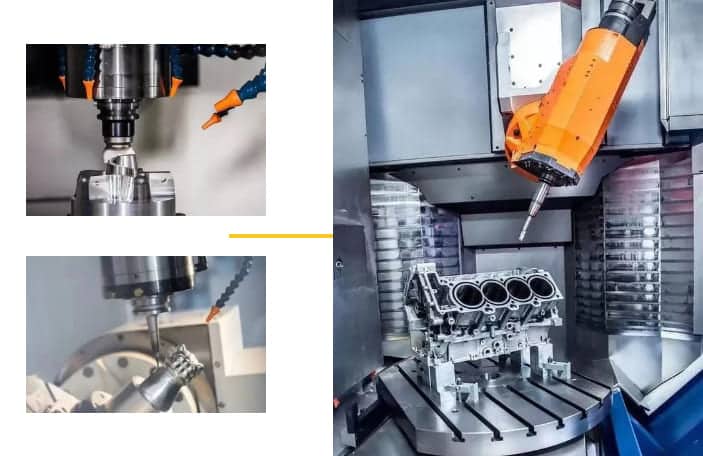
IV. Manufacturing Processes in Aluminium CNC Machining
Aluminium CNC machining encompasses a variety of processes that shape and fabricate aluminium parts with precision.
Let’s explore some key manufacturing processes used in aluminium CNC machining:
A. Milling and Turning:
- Milling: Milling is the process in which material is removed from workpiece using rotary cutter. In aluminium CNC machining, milling is commonly used to create complex shapes, features, and pockets. To accomplish particular geometries and surface qualities, many milling techniques can be used, including face milling, end milling, and profile milling.
- Turning: Turning is the process of rotating the workpiece while removing material with a cutting tool to produce cylindrical shapes. In aluminium machining, turning is used for creating cylindrical features like shafts, threads, and concentric surfaces. It’s particularly useful for producing round or symmetrical components.
B. High-Speed Machining:
High-speed machining (HSM) is a process that utilizes faster spindle and feed rates to rapidly remove material.
In aluminium CNC machining, HSM takes advantage of the material’s relatively low hardness to achieve rapid material removal rates.
This technique is effective for reducing machining times and increasing productivity while maintaining precision.
C. Multi-Axis Machining:
To manufacture complex forms and contours, multi-axis machining involves moving several axes at once.
Multi-axis machines can carry out complex operations with just one setup while cutting aluminum, minimizing the need to move the workpiece.
Common multi-axis configurations include 3-axis, 4-axis, and 5-axis machining, with 5-axis offering the greatest flexibility for creating complex geometries and contours.
Advantages of Each Process for Aluminium CNC Machining:
- Milling and Turning: These processes offer versatility in creating a wide range of part geometries, from simple to complex. They can be used for both internal and external features and are well-suited for producing parts with rotational symmetry.
- High-Speed Machining: HSM is ideal for aluminium machining due to the material’s softness. It allows for rapid material removal without excessive tool wear, resulting in shorter machining times and increased productivity.
- Multi-Axis Machining: Multi-axis machines is used to creating intricate and complex shapes. They reduce the need for multiple setups, improving accuracy and reducing production time for parts with complex geometries.
Considerations:
- Material Properties: Aluminium’s characteristics, such as its low hardness and heat conductivity, influence tool selection and cutting parameters for each machining process.
- Tooling: For effective and precise machining outcomes, selecting the right tool materials, coatings, and geometries is essential.
- Machine Capability: The CNC machine’s capabilities, including spindle speed, feed rates, and available axes of movement, dictate the feasibility of different machining processes.
- Part Complexity: The complexity of the part’s geometry and required features influences the choice of machining processes. More complex parts may benefit from multi-axis machining.
By understanding the strengths and applications of milling, turning, high-speed machining, and multi-axis machining, manufacturers can select the most suitable processes for aluminium CNC machining.
This ensures that parts are accurately fabricated, meet design specifications, and are produced efficiently.
V. Surface Finishing Options for Aluminium CNC Parts
A. Role of Surface Finishing:
An important aspect of the CNC machining process for aluminum parts is surface finishing.
While machining shapes the part’s geometry, surface finishing enhances its appearance, functionality, and durability.
The right surface finishing technique not only provides aesthetic appeal but also improves corrosion resistance, wear resistance, and other performance characteristics.
Here’s why surface finishing is essential:
- Aesthetic Appeal: Surface finishing enhances the visual appeal of CNC machined aluminium parts, making them more attractive and professional-looking.
- Corrosion Resistance: Aluminium naturally forms an oxide layer on upper surface on metal so, it become corrosion resistance. Surface finishing methods can further enhance this protection, extending the part’s lifespan in corrosive environments.
- Wear Resistance: Certain surface finishing techniques, such as anodizing, hard anodizing, and coatings, improve the part’s wear resistance, making it suitable for applications with high friction or abrasive conditions.
- Improved Lubrication: Some surface finishes, like coatings and platings, can provide improved lubrication properties, reducing friction and wear in moving parts.
- Electrical Conductivity: Anodizing and other surface treatments can preserve the material’s electrical conductivity while adding other beneficial properties.
- Thermal Management: Thermal coatings and finishes can enhance the part’s ability to dissipate heat, making them suitable for applications where thermal management is crucial.
B. Popular Aluminium Finishing Techniques:
Several surface finishing techniques are commonly used for aluminium CNC machined parts. Below are the some Popular Aluminium Finishing Techniques :
- Anodizing: An electrochemical procedure called anodizing coats the surface of aluminum with a protective oxide coating. It enhances corrosion resistance, provides a durable finish, and can be dyed in various colors.
- Chemical Conversion Coating: Chemical conversion coatings, such as chromate or phosphate coatings, provide corrosion resistance, paint adhesion, and improved electrical conductivity.
- Electroplating: Electroplating involves depositing a layer of metal onto the aluminium surface. Common platings include nickel, chrome, and zinc, which offer enhanced durability, aesthetics, and resistance to certain environmental conditions.
- Painting and Powder Coating: Painting and powder coating offer a wide range of colors and finishes while providing protection against corrosion, UV exposure, and other environmental factors.
- Brushed and Polished Finishes: Mechanical finishing techniques like brushing and polishing can create textured or reflective surfaces, enhancing the aesthetic appeal of parts.
- Bead Blasting: Bead blasting involves propelling fine beads at the aluminium surface to create a matte texture. It’s often used to improve paint adhesion or create a uniform appearance.
- Clear Coatings: Clear protective coatings, such as clear lacquers or sealants, can preserve the natural appearance of the aluminium while offering a layer of protection against oxidation and environmental elements.
- Specialized Coatings: Depending on the application, specialized coatings like thermal barrier coatings or self-lubricating coatings can be applied to achieve specific performance characteristics.
Choosing the right surface finishing technique requires considering factors such as intended use, aesthetics, environmental conditions, and performance requirements.
Each technique offers unique benefits, and manufacturers often work closely with designers to select the most suitable finish for their aluminium CNC machined parts.
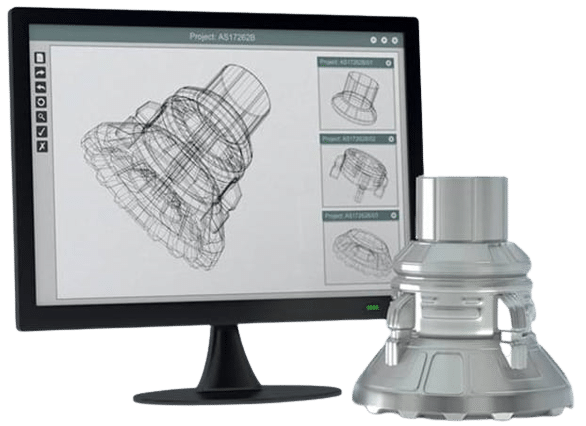
VI. Optimizing Cost and Efficiency in Aluminium CNC Machining
A. Design for Manufacturability:
Designing for manufacturability is a crucial strategy for optimizing cost and efficiency in aluminium CNC machining.
This approach involves creating designs that are not only functional and aesthetically pleasing but also consider the practical aspects of the manufacturing process.
Here’s how “design for manufacturability” contributes to cost-effective and efficient CNC machining:
- Simplified Geometries: Longer machining times, increased tool wear, and higher costs might result from complex and complicated designs. Simplifying geometries, minimizing sharp angles, and reducing unnecessary features can streamline the machining process.
- Material Selection: Choose aluminium alloys that are readily available and cost-effective for your specific application. Avoid exotic or hard-to-source alloys that might drive up material costs.
- Standard Tooling: Designing parts that can be machined using standard tooling and tool sizes can significantly reduce tooling costs. Custom tooling can be expensive and might not always be necessary.
- Minimize Tool Changes: Designing parts that can be machined with a minimal number of tool changes helps reduce setup times and enhances overall machining efficiency.
- Avoid Overcuts: Overcuts occur when features are machined beyond the required dimensions. Precision in design can minimize overcuts, saving material and machining time.
- Optimal Tolerances: Specify tolerances that are necessary for the functionality of the part. Tighter tolerances often require more precise machining, which can increase costs.
- Assembly Considerations: Design parts that can be easily assembled without requiring complex jigs, fixtures, or additional machining steps. Simplifying the assembly process reduces overall production time and costs.
- Prototyping and Iteration: Before going into full production, test your idea through rapid prototyping. This minimizes the risk of costly design errors and modifications during CNC machining.
B. Balancing Performance and Cost:
Balancing performance and cost is a delicate but essential aspect of aluminium CNC machining.
While it’s important to create high-quality parts that perform optimally, it’s equally crucial to manage costs effectively. Here’s how to achieve this balance:
- Material Optimization: Select the appropriate aluminium alloy based on required mechanical properties, corrosion resistance, and thermal conductivity. Choose a balance that meets performance needs without over-specifying the material.
- Efficient Tooling: Invest in high-quality equipment that balances performance and affordability. Tools with longer lifespans and optimized cutting geometries can save money in the long run.
- Machining Strategies: Choose machining strategies that optimize tool paths, minimize idle time, and reduce tool changes. High-speed machining and multi-axis milling can enhance efficiency without compromising quality.
- Batch Production: Consider batch production for parts with similar geometries. Batch machining can reduce setup times, improve consistency, and lower per-part costs.
- Value Engineering: Continuously review the design and manufacturing process to identify opportunities for cost savings without compromising performance. This involves revisiting materials, tolerances, and manufacturing techniques.
- Supplier Relationships: Build strong relationships with material suppliers and CNC machining service providers. Bulk purchasing and long-term partnerships can lead to cost discounts and improved lead times.
- Feedback Loop: Maintain open communication between design and manufacturing teams. Feedback from machinists can provide insights into design changes that can enhance efficiency and reduce costs.
By embracing design for manufacturability principles and striking the right balance between performance and cost, manufacturers can achieve optimal results in aluminium CNC machining.
These strategies not only contribute to efficient production but also ensure that the final parts meet quality standards, functional requirements, and customer expectations—all while minimizing expenses.
VII. Quality Control and Inspection in Aluminium CNC Machining
A. Importance of Quality Assurance:
Quality assurance is a critical aspect of aluminium CNC machining that ensures the final products meet the desired standards of accuracy, functionality, and reliability.
In the context of CNC machining, where precision is paramount, quality control plays a central role for both manufacturers and customers.
Here’s why quality assurance is of utmost importance:
- Product Reliability: High-quality aluminium CNC machined parts are more likely to perform reliably and consistently over their intended lifespan. Quality assurance minimizes the risk of defects, premature failures, and costly recalls.
- Customer Satisfaction: Delivering parts that meet or exceed customer expectations fosters trust and satisfaction. Consistently providing high-quality products enhances a manufacturer’s reputation and encourages repeat business.
- Compliance: Many industries have strict regulatory standards and requirements. Quality control ensures that CNC machined aluminium parts adhere to these standards, avoiding legal or regulatory complications.
- Cost Savings: Detecting and addressing quality issues early in the production process reduces the need for rework, scrap, and costly corrective actions. Effective quality assurance contributes to overall cost efficiency.
- Process Optimization: Quality control provides insights into the performance of machining processes, tooling, and materials.
- Continuous Improvement: Implementing quality control fosters a culture of continuous improvement. By monitoring and analyzing results, manufacturers can identify trends, address root causes, and refine their operations over time.
B. Inspection and Testing Processes:
Inspection and testing are integral components of quality control in aluminium CNC machining.
These processes help identify deviations from specifications and ensure that only parts meeting predetermined criteria are approved for use.
Here are some common inspection and testing processes:
- Dimensional Inspection: Precision is paramount in CNC machining. Dimensional inspection entails comparing the dimensions of parts to the design specifications using calibrated measuring tools such micrometers, calipers, and coordinate measuring machines (CMMs).
- Surface Finish Evaluation: CNC machined aluminium parts often require specific surface finishes for functional or aesthetic reasons. Surface roughness and finish quality are assessed using instruments like profilometers and visual inspection.
- Visual Inspection: Visual checks are conducted to identify any visual defects, such as surface scratches, tool marks, burrs, or irregularities. This inspection helps ensure parts meet aesthetic and functional requirements.
- Hardness Testing: Depending on the application, hardness testing may be performed to verify the part’s mechanical properties. Instruments like hardness testers assess the hardness of the material, ensuring it meets specifications.
- Assembly Fit and Tolerance Checks: Machined parts often need to fit precisely with other components. Assembly checks verify that parts fit together as intended and that tolerances are maintained.
- Material Analysis: Material composition is critical for aluminium CNC machined parts. Spectroscopy and other material analysis techniques confirm that the material used matches the specified alloy.
- Functional Testing: For more complex parts, functional testing may be required to ensure that the part performs its intended role. This could involve simulations, load testing, or other performance evaluations.
- Documentation and Traceability: Quality control involves maintaining accurate documentation of inspections, tests, and results. This documentation ensures traceability and helps manufacturers address any issues that arise.
In conclusion, quality control and inspection processes are integral to aluminium CNC machining.
By implementing rigorous quality assurance practices and utilizing advanced inspection and testing techniques, manufacturers can produce aluminium CNC machined parts that are reliable, accurate, and of the highest quality.
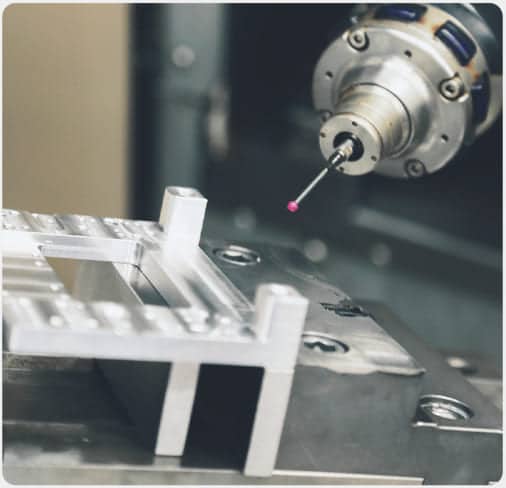
VIII. Importance of CNC Machining Design Guide in Aluminium CNC Parts Production
A. Key Takeaways for Designers and Manufacturers:
- Guided Design Process: The guide provides a structured approach to designing aluminium parts, offering insights into optimal geometries, tolerances, and material considerations.
- Optimized Material Usage: By adhering to the guide’s recommendations on wall thicknesses, fillets, and features, designers can maximize material efficiency. This minimizes waste and reduces material costs while maintaining part integrity.
- Improved Product Quality: Following the design guide ensures that parts are designed to be machined accurately and consistently. This leads to better product quality, reduced defects, and improved overall performance.
- Cost-Effective Manufacturing: Designing parts with the guide’s principles in mind results in designs that can be machined efficiently, reducing machining time, tool wear, and overall production costs.
- Faster Time-to-Market: Properly designed parts lead to smoother manufacturing processes and shorter lead times. This allows for quicker product development cycles and faster time-to-market.
- Reduced Iterations: The guide helps identify potential design issues early, minimizing the need for iterations and design revisions during production. This saves time, resources, and avoids delays.
- Informed Decision-Making: Designers can make informed decisions about material selection, machining strategies, and finishing options based on the guidance provided. This leads to better choices that align with project goals.
B. The Impact of Design and Manufacturing Considerations:
The impact of design and manufacturing considerations in CNC machining aluminium parts production is profound:
- Manufacturability: Designs that take into account manufacturing processes and limitations are easier to produce accurately and efficiently. Considering factors like tool access, machining order, and material properties ensures successful fabrication.
- Cost Efficiency: Poorly designed parts can lead to increased machining times, excessive tool wear, and material wastage, all of which contribute to higher production costs. Designing for manufacturability helps minimize these expenses.
- Precision and Quality: Design decisions influence the final product’s dimensional accuracy, surface finish, and overall quality.
- Production Speed: Efficiently designed parts can be machined quickly with minimal tool changes and setups. This accelerates production timelines, allowing manufacturers to meet tight deadlines.
- Resource Utilization: When parts are designed for optimal material usage and machining efficiency, manufacturers can make the most of available resources, whether it’s raw materials, machining equipment, or labor.
- Collaboration and Expertise: Collaboration between design and manufacturing teams fosters cross-functional expertise. Designers gain insights into the production process, and machinists understand the design intent, leading to more effective problem-solving.
- Reduced Risk: Addressing potential challenges early in the design phase reduces the risk of errors, rework, and project delays. This contributes to smoother production processes and more predictable outcomes.
Conclusion:
In conclusion, the design and manufacturing of Aluminium CNC parts demand a comprehensive understanding of key considerations.
From material selection to geometric complexity, structural integrity, and surface finish, each aspect plays a crucial role in achieving optimal performance and functionality.
Balancing these factors, while harnessing the precision and versatility of CNC machining, ensures the creation of high-quality Aluminium parts that meet stringent requirements across various industries.
As technology evolves, staying updated with advancements in CNC techniques and software will further enhance the efficiency and effectiveness of producing top-notch Aluminium components.
 Call Us Today! (+86) 188-2253-7569
Call Us Today! (+86) 188-2253-7569